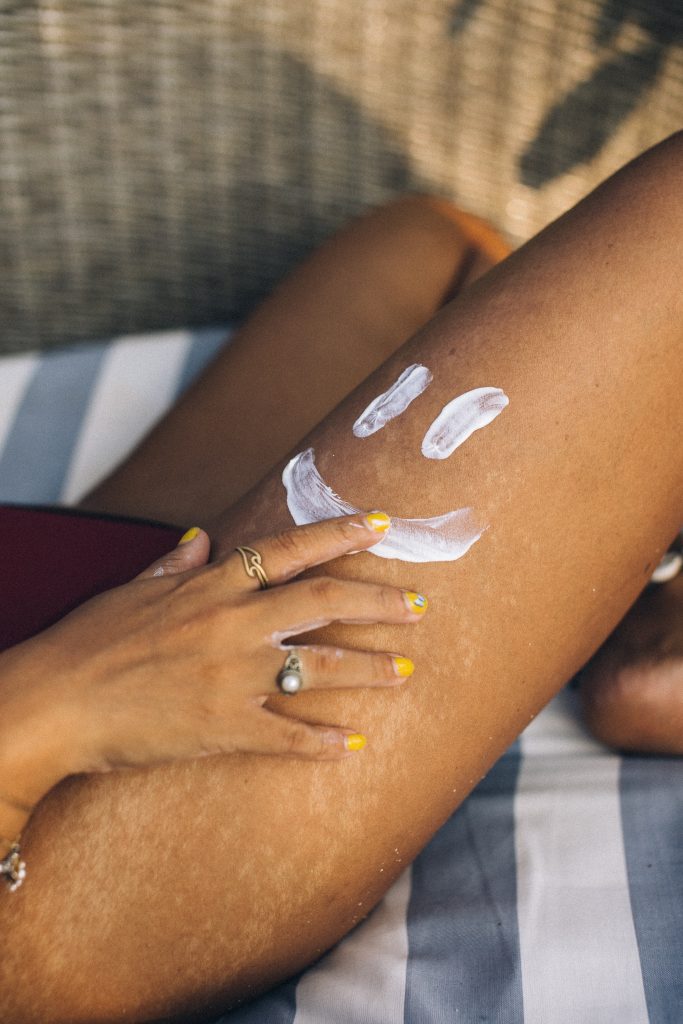Mat burn is a common injury that many people who practice grappling may face. This article will introduce the different types of mat burns, discuss why they happen, and outline how to prevent or treat them.

What is mat burn?
Mat burn, also known as rug burn, carpet burn or friction burn, is a burn that may occur on the skin when exposed to excessive friction. It is commonly found on the knees, elbows, palms, feet, and other joints exposed to friction with the mat.
It is usually red or dark brown in appearance and can be very painful.
Mat burn is almost always a first degree burn, but may be a second degree burn or third degree burn in rare instances.
Mat burn hurts, but is otherwise harmless, as long as the wound doesn’t get infected with one of the common skin infections in BJJ.
What causes mat burn?
Mat burn is caused by the friction from the skin rubbing against the surface of the mat. This friction causes heat, and therefore literally burns the skin.
In order for the friction to actually cause a burn, you need to rub your skin against the mat hard, quickly, or for a long distance (or all of these).
Common areas of mat burn
The most common areas to get mat burn from wrestling and Brazilian jiu jitsu are the following.
Mat burn on knees
Mat burn on the knees is very common for grapplers and wrestlers that wear shorts. We often post on one knee, and the knee then carries a lot of our weight. This automatically ticks off one of the mat burn causes: rubbing the skin on the mat with lots of force.
Mat burn on elbow
Probably the second most common area for mat burn is the elbow. Again, this is because we often post on one elbow and the elbow can carry a lot of our weight, so we can rub it against the mat with a lot of weight behind it.
Mat burn on toes
Mat burn on the top of your foot or toe is often a mat burn from jiu jitsu. It’s caused by kneeling and having your feet flat on the ground (as opposed to kneeling with active toes), and then swiftly swiping your feet across the mat. This may sound quite specific, but it actually happens all the time from closed guard, mount, and side control, when you try to catch your balance.
Mat burn on face
If you have a mat burn on your face, you probably got that mat burn from wrestling. It happens a lot when you’re in a front headlock, and your training partner just snaps your face down into the ground.
How to prevent mat burn?
To prevent mat burn, take the following steps.
Wear a rash guard
The most effective way to prevent mat burn is to wear good rash guard. Rash guards are made from a very soft, thin material that helps to keep the skin from rubbing against the mat. The rash guard should be tight fitting to help prevent mat burn. If a person wears a rash guard, the skin will not rub against the mat, and there will be no mat burn.
Wear spats
If you wear shorts and get mat burn on your knees, consider wearing spats under your shorts. These prevent your knees from rubbing directly on the mat and therefore help to prevent matburn.
Take care of your skin
Basic skin care also helps to strengthen your skin and keep it moisturized which makes it more resilient to friction. So make sure you don’t shower too hot and too long, and use a moisturizer if you have dry skin.
Wear knee pads and elbow pads
If you don’t want to wear a long sleeve rash guard and spats, consider buying elbow pads and knee pads. They’re a little less comfortable because they have padding and are designed to limit the mobility of your joint. But, they still prevent your skin from rubbing on the mat, and thus prevent mat burn.
Adjust your roling style
It is also possible to prevent mat burn by adjusting the way you roll. The main cause of mat burn is friction, and the main areas where you get matburn are the elbows, knees and the top of the feet. Try to keep these areas off the mat, and definitely try not to slide them over the mat.
How to treat mat burn?
To treat mat burn, take these steps to speed up the healing process.
Cool the mat burn with cold water
The best mat burn remedy is to run cold water over the mat burn directly after you get it for 15 minutes. Remember, a mat burn is a real first degree burn, so you should treat it the same way as you do any other burn wounds.
Disinfect the wound
Disinfect the wound with an antibacterial cream to prevent skin infections. If you get a skin infection in your mat burn, the wound will heal much more slowly.
Apply burn cream
If a person does not have a rash guard, they may apply a good burn cream (for example a cream with aloe vera) to the area before training or competition. In some cases, a person may have a severe case of mat burn that will not go away after a couple of days. In this case, a doctor should be consulted, as no burn cream will help the problem.
How to tape mat burn
If you know how to tape mat burn it can help you get back to training quicker. To tape mat burn, take the following steps.
Never apply athletic tape directly to the wound
Always put a band aid over the affected area and then tape over that. If you tape directly over the wound, you will tear the wound open more when you take the tape off. Also make sure that you use the right tape for BJJ, which is always quality athletic tape or KT tape.
Use liquid bandage
If the affected area is small enough, you should consider using a liquid bandage instead of a bandage and tape. Liquid bandages stay on much better and don’t cause friction with the mat burn, which hurts.
Use a rashguard or pads instead of tape
To be honest, taping mat burn almost never works, because it’s usually in spots that are hard to tape. In those cases you should consider using elbow pads, knee pads, or a rash guard or spats instead (depending on the location of the mat burn).
What if my mat burn doesn’t heal?
If you follow all the steps on how to heal matburn in this article, your mat burn should disappear completely within 1 or 2 weeks.
If your mat burn won’t heal, you might have a skin infection.
Some of the symptoms of skin infections can be similar to what you would experience in the healing process of your mat burn (itchiness, pain, redness), so an infection may be hard to detect.
If your mat burn is not healing, you should check with a doctor to see if the wound is infected, and then take corresponding steps.
